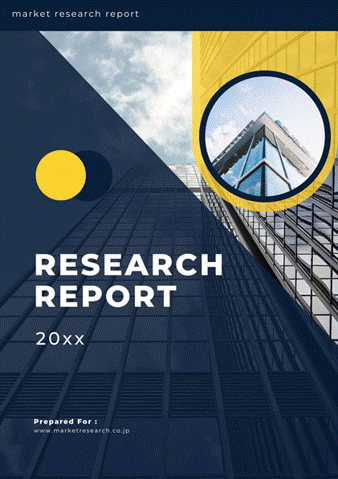 | • レポートコード:D0MOR-NV057 • 出版社/出版日:Mordor Intelligence / 2020年9月 • レポート形態:英文、PDF、150ページ • 納品方法:Eメール(受注後2-3営業日) • 産業分類:医療 |
| Single User | ¥629,000 (USD4,250) | ▷ お問い合わせ |
| Team User | ¥703,000 (USD4,750) | ▷ お問い合わせ |
| Corporate License | ¥888,000 (USD6,000) | ▷ お問い合わせ |
• お支払方法:銀行振込(納品後、ご請求書送付)
レポート概要
| 本調査レポートでは、生体刺激剤の世界市場について調査し、イントロダクション、調査手法、エグゼクティブサマリー、市場動向、オリジン別(天然生物刺激剤、生合成生物刺激剤)分析、有効成分別(フミン酸、フルボ酸、アミノ酸、タンパク質加水分解物、海藻抽出物)分析、用途別(葉状、土壌、シード)分析、穀物種類別(穀物・シリアル、豆類・油糧種子、商品作物、果物・野菜、その他)分析、地域別分析、競争状況、市場機会・将来分析などを整理しました。 ・イントロダクション ・調査手法 ・エグゼクティブサマリー ・市場動向 ・生体刺激剤の世界市場規模:オリジン別(天然生物刺激剤、生合成生物刺激剤) ・生体刺激剤の世界市場規模:有効成分別(フミン酸、フルボ酸、アミノ酸、タンパク質加水分解物、海藻抽出物) ・生体刺激剤の世界市場規模:用途別(葉状、土壌、シード) ・生体刺激剤の世界市場規模:穀物種類別(穀物・シリアル、豆類・油糧種子、商品作物、果物・野菜、その他) ・生体刺激剤の世界市場規模:地域別 ・競争状況 ・市場機会・将来分析 |
The Global Biostimulant Market is projected to register a CAGR of 13% during the forecast period. The organic food industry, which is growing at a healthy rate, is the major driving force behind the growth of the biostimulant market. Increased awareness among the farmers especially in Asia-Pacific about the benefits of biostimulants is another factor augmenting the growth of the market studied. The market is also growing due to the increased adoption of sustainable farming methods.
Europe was the largest geographical segment of the market studied. The increasing concern on environmental health is anticipated to aid the growth in the market, over the forecast period. Biostimulants are widely used on cereals, fruits, and vegetables. These segments account for around half of the market share. The demand from the North American segment is driving the demand for turf & ornamental biostimulants as well.
UPL Corporation Limited, Tradecorp International, and Biostadt India Ltd. cover the majority of the market share. Acquisitions, partnerships, and investments are the most adopted strategies in the market.
[Key Market Trends]
Expansion of Organic Food Industry driving the Market
Organic biostimulants are significant for the future of the agricultural industry, in terms of promoting organic practices. Biostimulants can enhance soil microflora, which, in turn, helps make the uptake of nutrients more efficient. Others increase antioxidant activity in plants and boost internal defenses against environmental stresses and disease pressure. Biostimulants are associated with organic farming and gardening, which are currently witnessing healthy progress in conventional agriculture as well. Biostimulants are increasingly being perceived as a response to the consumer demand for ‘softer’ agricultural practices.
Organic food and related agriculture currently account for around 5.0-10.0% of the food market, varying from region to region. According to FiBL, the organic area share of total farmland in Europe increased from 2.7% in 2016 to 3.12% in 2018. Similarly, the organic area share of total farmland in Latin America increased from 0.99% in 2016 to 1.06% in 2018.As organic food products are produced without using any pesticide or fertilizer, the demand for plant biostimulants is on the rise. Consequently, the increasing popularity of organic farming drives the demand for biostimulants.
[Europe Dominates the Global Market]
The European Union’s stringent regulations on environmental safety and support for organic farming have paved the way for a flourishing biostimulant market in European countries, such as Germany, Italy, and France. In addition, inventions in plant biostimulants, targeting specific agronomic needs, are attracting new customers in Europe.
Owing to the ready availability of raw materials and high effectiveness, humic acid is the largest category of biostimulants consumed and marketed in Europe. Some of the major crops where biostimulants are applied are citrus, pome fruits, grape, olives, broccoli, cabbage, carrots, cauliflower, cucumber, onion, eggplant, garlic, melons, tomato, squash, watermelon, pepper, tomato, wheat, rice, maize, oilseed, sugar beet, turf, flowers, and ornamentals.
In Germany, the German Federal Office of Consumer Protection and Food Safety (BVL) has developed a regulatory framework for “plant strengtheners” (PS) that corresponds to biostimulants. Commercial products containing more than 5.0% of seaweed extracts cannot be considered as PS. Therefore, a new regulation, specifically for biostimulants, can help in strengthening the market in the future.
[Competitive Landscape]
The Global Biostimulant Market is highly fragmented, with various small and medium-sized companies and a few big players, resulting in stiff competition in the market. The development of regional markets and local players in different parts of the world is the major factor for the fragmented nature of the market. North America and Europe are the two regions showing maximum competitor activities. The major companies in the Global Biostimulant Market include: UPL Limited, Biostadt India Limited, Agrinos AS, Valagro SpA., and Ilsa SpA., among others.
[Reasons to Purchase this report]
• The market estimate (ME) sheet in Excel format
• 3 months of analyst support
1 INTRODUCTION
1.1 Study Assumptions & Market Definition
1.2 Scope of the Study
2 RESEARCH METHODOLOGY
3 EXECUTIVE SUMMARY
4 MARKET DYNAMICS
4.1 Market Overview
4.2 Market Drivers
4.3 Market Restraints
4.4 Porter’s Five Forces Analysis
4.4.1 Bargaining Power of Suppliers
4.4.2 Bargaining Power of Buyers
4.4.3 Threat of New Entrants
4.4.4 Threat of Substitutes
4.4.5 Competitive Rivalry
5 MARKET SEGMENTATION
5.1 Origin
5.1.1 Natural Biostimulants
5.1.2 Biosynthetic Biostimulants
5.2 Active Ingredient
5.2.1 Humic Acid
5.2.2 Fulvic Acid
5.2.3 Amino Acids
5.2.4 Protein Hydrolysates
5.2.5 Seaweed Extracts
5.2.6 Other Active Ingredients
5.3 By Application
5.3.1 Foliar
5.3.2 Soil
5.3.3 Seed
5.4 By Crop Type
5.4.1 Grains & Cereals
5.4.2 Pulses & Oilseeds
5.4.3 Commercial Crops
5.4.4 Fruits & Vegetables
5.4.5 Other Crop Types
5.5 Geography
5.5.1 North America
5.5.1.1 United States
5.5.1.2 Canada
5.5.1.3 Mexico
5.5.1.4 Rest of North America
5.5.2 Europe
5.5.2.1 Germany
5.5.2.2 United Kingdom
5.5.2.3 France
5.5.2.4 Spain
5.5.2.5 Italy
5.5.2.6 Russia
5.5.2.7 Rest of Europe
5.5.3 Asia-Pacific
5.5.3.1 China
5.5.3.2 Japan
5.5.3.3 India
5.5.3.4 Australia
5.5.3.5 Rest of Asia-Pacific
5.5.4 South America
5.5.4.1 Brazil
5.5.4.2 Argentina
5.5.4.3 Rest of South America
5.5.5 Africa
5.5.5.1 South Africa
5.5.5.2 Rest of Africa
6 COMPETITIVE LANDSCAPE
6.1 Most Adopted Competitor Strategies
6.2 Market Share Analysis
6.3 Company Profiles
6.3.1 UPL Limited
6.3.2 Isagro SpA
6.3.3 Agrinos AS
6.3.4 Ilsa SpA
6.3.5 Biostadt India Ltd
6.3.6 Valagro SpA
6.3.7 Eastman Chemical Company
6.3.8 Lallemand Inc.
6.3.9 Atlántica Agricola
6.3.10 Brandt Consolidated Inc.
6.3.11 Italpollina SpA
6.3.12 Koppert Biological Systems
6.3.13 Micromix Plant Health Ltd
6.3.14 Omex Agrifluids Ltd
6.3.15 Tradecorp International
6.3.16 Agroenzymas Group
7 MARKET OPPORTUNITIES AND FUTURE TRENDS